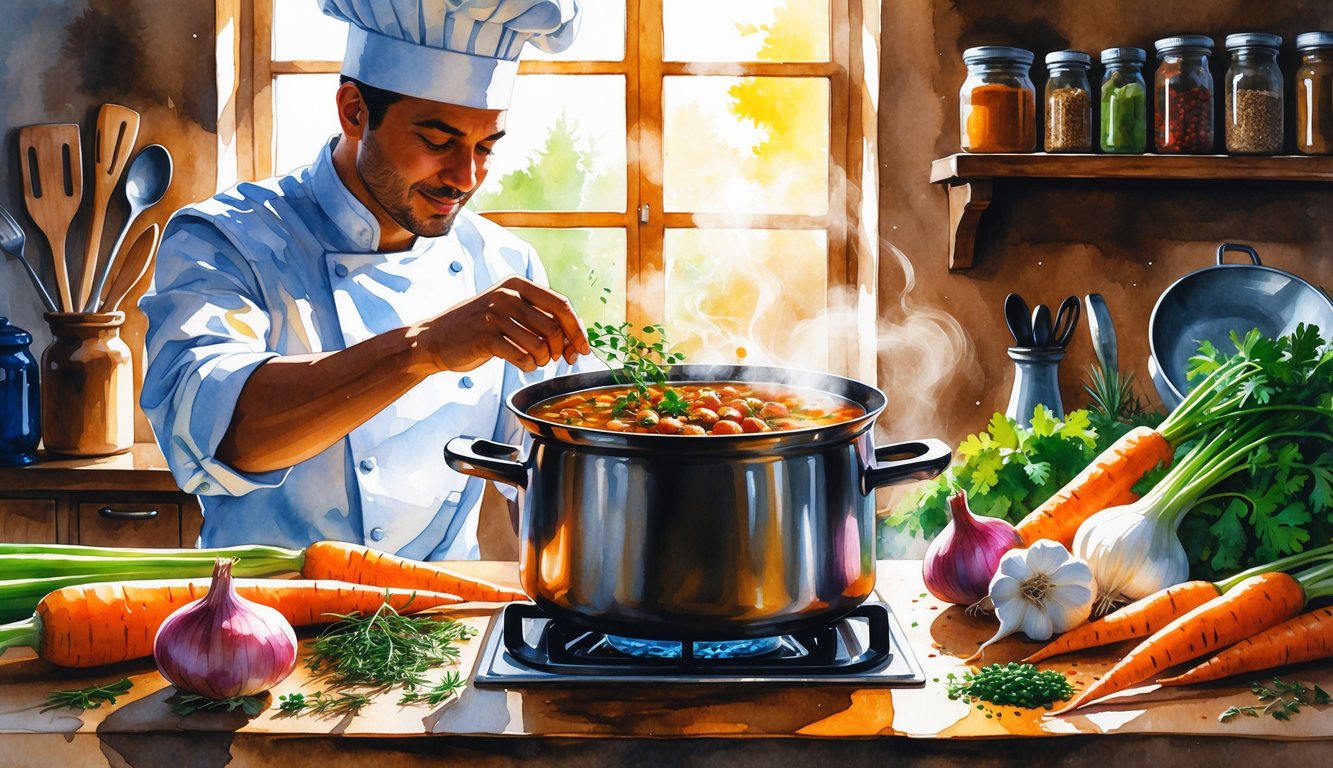
Whole Spices and Spice Blends
Why do I always find cardamom pods months later? No idea. Ever bitten into star anise by accident? It’s a surprise, I’ll say that. Most chefs I’ve watched just toss whole spices in and fish them out later—if they remember. Cumin, black peppercorns… they break down slow and make everything taste like real food, not powdered mix.
Blends, though—dangerous territory. I tried homemade ras el hanout once, and a tiny bit turned my stew into a spice bomb. Garam masala at the end is safer. It adds something, but doesn’t nuke all the flavors you worked for.
Michelin people love whole spices and fancy blends—smoked paprika, cumin, black pepper—but honestly, if you don’t want to chew coriander seeds, use a sachet or just call it “rustic” and move on. The house will smell amazing either way.
Balancing Paprika, Cumin, and Chili Powder
Three jars. Every time, I overdo the paprika and regret my life choices. Smoked paprika’s supposed to be subtle; instead, my stew tastes like a campfire. Some chef once told me to mix sweet, hot, and smoked, then add a pinch of chili powder for warmth, not pain.
Cumin—too much and suddenly it’s taco night. Not what I wanted. I’ve learned (painfully) to start tiny, taste after 20 minutes, then maybe add more. Pro tip, apparently.
Chili powder? I don’t trust pre-mixed ones. Cayenne content is a lottery. A little goes a long way. Sometimes I just dump in smoked paprika, cumin, bay leaves, and call it a day. Don’t overdo it or no one will want seconds, and then what was all this for?
Umami-Enhancing Secret Ingredients
Why does beef stew sometimes taste like, well, just beef and sadness? I’ve dumped in every vegetable and still ended up with disappointment. Turns out, “umami” isn’t just a buzzword; it’s the only thing standing between you and bland regret. If you’ve ever thrown in soy sauce at the last minute, you’re not alone.
Worcestershire Sauce, Soy Sauce, and Fish Sauce
Worcestershire sauce and soy sauce—should’ve started using these years ago. Every chef seems to have a crusty bottle lurking in their fridge. Worcestershire’s got anchovies and a tang that you don’t notice until you forget it—then everything’s boring. I learned that after a sad Sunday stew.
Dark soy sauce isn’t just salty; it’s loaded with glutamates and somehow makes potatoes taste meaty. Fish sauce? It’s not just for pho. One or two teaspoons, you won’t even taste “fish,” but you’ll know something’s up. I always dilute them first and add a little at a time.
Chefs everywhere seem to agree. I once spilled fish sauce on my sleeve and the smell never left. Consider yourself warned.
Adding Anchovies, Dark Chocolate, and Coffee
Anchovies. I know, I know. They’re scary. But one or two, mashed in? You’ll never taste “fish,” just some background magic. I once used a whole tin and basically made brine stew. Don’t be like me.
Dark chocolate and coffee—yes, really. I dropped chocolate in by accident and it was the best thing I ever did. Not milk chocolate, not sweet stuff. Use something over 70% cacao, just a tiny square. It won’t taste like dessert; it just adds a weird, good bitterness. Coffee, real brewed coffee (not instant), maybe half a cup at the end. Adds depth. Is it weird? Maybe. Does it work? Try it and blame me later.
Tomatoes can’t do this. Beef stew with umami tricks is just better. Parmesan rinds? I nuked one once and it exploded. Don’t ask.
Accentuating Acidity and Balance
Forget what TV chefs say. Sometimes I’m just standing over the pot, squeezing lemon and hoping I don’t ruin everything. Acidity can fix a flat stew, or it can make you hate dinner. I’ve dumped in too much vinegar and nearly cried. My upgrades come from random chef hacks, and honestly, nobody at my table misses bland beef after these.
Using Vinegar, Balsamic, and Lemon Juice
Dropped my ladle in disbelief—how does a splash of vinegar do more than hours of slow simmering? Seriously, why? I’ve read a bunch of chef interviews and, apparently, acid just wakes up a stew. Suddenly the meat and veg taste like themselves, but if you go overboard, yeah, it’s like you nuked the whole thing. Been there.
Balsamic is wild. It’s sweet enough to soften anything sharp—beef stew, obviously, but I chucked it into lamb once just because I was bored. Supposedly, according to Big Horn Olive Oil’s blog, the acetic acid breaks down tough meat and adds some kind of “depth,” but not in a weird, mouth-puckering way. Lemon juice? It’s chaos. Bright, sharp, sure, but then you’re fishing out seeds and the whole “professional chef” vibe is gone. I just dump in half a teaspoon at the end, and that’s it. Chefs always say balancing acid is tougher than fixing a burnt pot—no clue why, but they’re probably right.
My mom? She hates citrus, swears by it, but once dumped in rice vinegar by accident. Best stew she ever made. She’ll never admit it. Oh, and timing? Add acid at the end. Otherwise, you get stew that tastes like pickles, and nobody wants that. Chefs insist you taste before and after each addition. I forget half the time.
Tomatoes and Tomato Forward Flavors
Tomato paste. Ugh. I always think I’ve got it, then I burn the whole batch. It’s concentrated, intense, and supposedly loaded with umami (food science nerds love to say this). But if you dump it in too early, it just gets metallic and weird.
That squeeze tube of tomato paste? Miracle and menace. Too much and you’re fighting bitterness, that gross aftertaste tomato haters complain about. If you want “rounded acidity,” you gotta mix it up—canned tomatoes for body, paste for punch. My old sous chef swore you have to fry the paste in oil first, caramelize the sugars or whatever. I tried it, and yeah, it’s less harsh.
Potatoes and honey (yes, honey, don’t ask) can fix too much acid if you mess up—Voyoeats has a whole thing on it. Sometimes I toss in coriander or cinnamon, but honestly, if your guests are picky, don’t risk it. Tomatoes want to take over. If you don’t balance them, congrats, you’ve made tomato soup.



